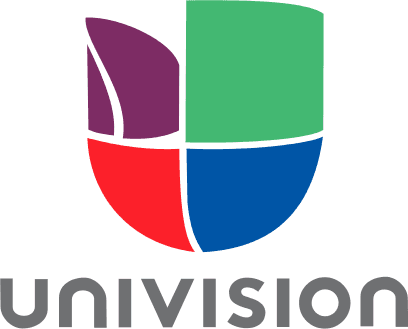Benefits Of Neurofeedback Therapy
Neurofeedback therapy is an effective, non-invasive, non-drug treatment used for various medical conditions like ADHD, autism, anxiety, stress, depression, PTSD, and other stress-related and neurodevelopmental disorders.
Unlike treatments that rely on invasive procedures or medications, neurofeedback therapy is a safe and effective treatment protocol.
For over 40 years, the Drake Institute has used neurofeedback therapy to help thousands of patients improve their lives. Our brain map-guided neurofeedback protocols are tailored to each patient’s needs to provide them with an improved quality of life.
Completing a neurofeedback treatment program is similar to learning how to ride a bike, with neurofeedback training acting like your bike’s training wheels. By relying on visual and sensory feedback, you learn what “balance” feels like, and with practice, you can learn to ride the bike without the need for training wheels or any other help.
And once patients recognize the feeling of “balance”, or proper brainwave patterns, they can self-regulate these healthy, more functional brainwave patterns.
This article will discuss the many benefits of neurofeedback therapy, including how it can help reduce pain, anxiety, depression, muscle tension, and substance abuse cravings, while also improving mental performance, focus, and neurodevelopmental disorders.
What Is Neurofeedback & How Does It Work?
Neurofeedback therapy is a type of biofeedback and is sometimes referred to as EEG Biofeedback.
While biofeedback treatment measures and records certain physiological activities, such as changes in muscle tension, heart rate, heart rate variability, sweat gland activity in fingers, and hand temperature, neurofeedback measures and records changes in brain activity.
Neurofeedback therapy begins with mapping out electrical activity in the patient’s brain to identify any areas of dysregulation. Dysregulation can occur when one or more of the brain’s interconnected networks are under-functioning, or when they fail to communicate completely or efficiently either within networks or between networks.
Once the region or regions of dysregulation have been determined, our medical director will create a customized neurofeedback treatment protocol to address the dysregulation. With the aid of neurofeedback therapy, brainwave activity can become more properly appropriate for the task at hand, resulting in improved focus, executive functioning, the ability to regulate emotions, get restful sleep, utilize effective language processing skills, and face the general challenges of daily life with improved capacity.
In short, neurofeedback helps patients regulate their own brain activity to self-generate healthier brainwave patterns for optimal results.
What Is Neurofeedback Therapy Used For?
Neurofeedback therapy can treat a variety of conditions that arise from abnormal brainwave patterns. It can also help mitigate the symptoms resulting from those conditions.
At the Drake Institute, customized treatment protocols are developed to address each patient’s individual needs, according to their brain activity and correlated symptoms.
The following is a list of the primary conditions that neurofeedback therapy is used to treat:
- ADHD
- Autism Spectrum Disorder
- Clinical Depression
- Stress
- Anxiety
- PTSD
- Insomnia
- Panic Attacks
- Seizure Disorders
- Traumatic Brain Injury
- Phobia Disorders
What Are The Benefits Of Neurofeedback Therapy?
Neurofeedback therapy benefits are experienced throughout the treatment process and even after the conclusion of therapy.
As we mentioned above, neurofeedback therapy is drug-free and non-invasive, meaning that there is only a low chance of any adverse side effects.
So just what are the benefits of neurofeedback therapy? Keep reading below.
Drug-Free
Neurofeedback therapy does not make use of any medications or drugs. That significantly reduces the risk of unexpected side effects. What’s more, the benefits of drug-based treatments frequently end when the drug is discontinued, but with neurofeedback, results can continue long after treatment sessions have ended since the benefits are self-generated.
Non-Invasive
Another benefit of neurofeedback therapy is that it is non-invasive. Neurofeedback only measures and displays brain activity, much like a thermometer only measures and displays temperature. With neurofeedback, the patient is in control of their brainwave changes and improvement.
Self-Regulation Training
Your brain activity varies throughout the day, depending on what you are doing. However, in a dysregulated brain, abnormally slow or faster frequency brainwaves may occur at the wrong time, resulting in symptoms linked to neurophysical disorders.
Neurofeedback teaches each patient to regulate their brain activity and guide it toward more functional patterns, which allows the brain to operate more optimally and reduce negative symptoms. Once this skill is learned, the patient can experience long-term improvement.
Reduces Depressive Episodes
Depression is a mental disorder that affects around 10% of the American adult population. Symptoms of depression can include sadness, fatigue, pessimism, and sometimes suicidal thoughts. Depression is notoriously difficult to treat, and up to 30% of people with depression may be resistant to medication-based treatments. [i]
Neurofeedback therapy is a safe option that can be used to treat depression and its accompanying physical and mood-related symptoms, all without the unpleasant side effects that can be associated with the use of antidepressant medications.
Improves Cognitive Functioning
Another neurofeedback therapy benefit is improved cognitive functioning, which may include improvements in concentration, focus, executive functioning, memory, organization, impulse control, and more.
Because neurofeedback training is a self-regulating, learned skill, patients can enhance their own cognitive functioning as they practice control over their brainwave activity. The treatment process strengthens the brain’s ability to generate appropriate brainwave patterns that can lead to long-term improvement.
Improves Emotional Stability
Everything from environmental factors to diet can affect our emotions and moods. Some people, especially those with anxiety or depression-related conditions, may experience uncomfortable emotions that affect their work, relationships, and overall quality of life.
Neurofeedback encourages the brain to regulate itself optimally by creating appropriate brainwaves based on the needs of the task at hand. When emotions become overwhelming and disruptive, techniques learned during neurofeedback treatment can help mitigate them. Learning how to modify and improve your own brainwave patterns can also reduce intrusive thoughts and problematic rumination.
Can Be Used As Complementary Therapy
Neurofeedback therapy can be used safely alongside other treatments. It works well as a complementary process to other treatments currently being administered.
Neurofeedback can be used in conjunction with medications, psychotherapy, and physical therapy in both adults and children.
Is Neurofeedback Therapy Safe?
Neurofeedback therapy is a safe and effective treatment technology that addresses multiple disorders and their symptoms.
During treatment sessions, no external stimulation is applied to the brain and no drugs are used. Indeed, neurofeedback simply measures and displays the patient’s brainwave activity.
This information is displayed on a screen in a form that the patient can easily understand, allowing the brain to improve and optimize its own activity to a more healthy and functional state.
Does Neurofeedback Therapy Have Any Side Effects?
As long as neurofeedback protocols are prescribed by a highly competent and experienced clinical professional, it is a safe treatment.
Without drugs and invasive procedures, there is only a very low chance of experiencing any side effects from professionally prescribed neurofeedback treatment.
Why Is Neurofeedback So Important?
Neurofeedback is a vital tool in treating disorders like ADHD, autism, depression, stress, anxiety, PTSD, and other conditions that have their roots in brainwave dysregulation.
To understand how neurofeedback therapy treats these brain-related disorders, you should first understand the different types of brainwaves we experience.
- Delta waves are the slowest-frequency brainwave type. They occur predominantly throughout infancy and during deep sleep.
- Theta waves are also very slow frequency brainwaves. They typically occur when the brain is very relaxed, such as when you are drifting off to sleep or daydreaming. Too many theta waves can lead to conditions like depression, impulse control problems, and even ADHD.
- Alpha waves are the next fastest frequency and indicate a state of calm awareness. These waves occur at the highest amplitude in the posterior part of the brain when we close our eyes and relax. These brainwaves are important for relaxation and can be low in people who struggle with alcohol abuse problems.
- Beta waves are fast frequency waves we experience that are necessary for tasks like concentration, task completion, and executive functioning. These waves happen when the brain is actively engaged and focused. However, beta waves can cause problems when they are excessive, leading to anxiety and insomnia.
Too many or too few of each type of brainwave can disrupt regular brain functioning, leading to negative symptoms. Brainwave dysregulation can negatively affect a person’s ability to follow through with tasks, regulate their emotions, utilize their memory, concentrate, or perform proper executive functioning.
Neurofeedback acts to help the patient gain control over these brainwaves and direct them towards healthier, more effective patterns that reduce the unwanted symptoms of their brain-related condition.
How The Drake Institute Uses Neurofeedback
For over 40 years, the Drake Institute has been using neurofeedback therapy to help thousands of patients reduce symptoms of brain-based conditions and improve their quality of life.
Neurofeedback treatment protocols at Drake are specifically designed to address the needs of each patient, using a sophisticated treatment strategy that starts with brain mapping and which may also include neuromodulation therapy.
Brain Mapping
Brain mapping is the first step in prescribing neurofeedback therapy.
During this phase of treatment, our staff will place 19 sensors around the patient’s scalp. These sensors measure the brainwave activity happening in specific locations of the brain.
The results, or map of the patient’s brain activity, are then compared to an FDA-registered reference normative database of asymptomatic, same-age individuals. The comparison helps us to identify any areas that are dysregulated and linked to symptoms.
Once the brainwave comparison data has been gathered and analyzed, our Medical Director will create a treatment protocol to address those areas of dysregulation.
Neuromodulation
In some cases, we may also use neuromodulation in addition to neurofeedback treatment.
As with all of our treatments, neuromodulation is non-invasive. It uses NeuroField technology to gently stimulate the brain into recreating healthy brain wave patterns.
Neuromodulation is similar to working with a tennis instructor. Just as the instructor may physically guide your arms through a swing so you can see what proper form should feel like, neuromodulation gently guides brainwaves to a more desirable, more efficient pattern that can optimize performance and reduce unwanted symptoms.
This process allows patients to experience what “proper” brain functioning feels like and is instrumental in helping them stabilize healthier, more functional patterns that can reduce symptoms.
Contact The Drake Institute Today!
If you or someone you know is looking for relief from any of the abovementioned conditions or others, call the Drake Institute today at 1-800-700-4233 or fill out the free consultation form.




